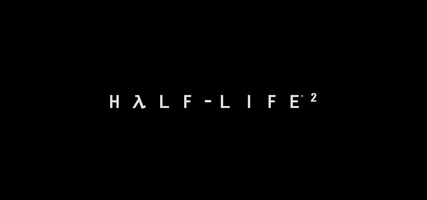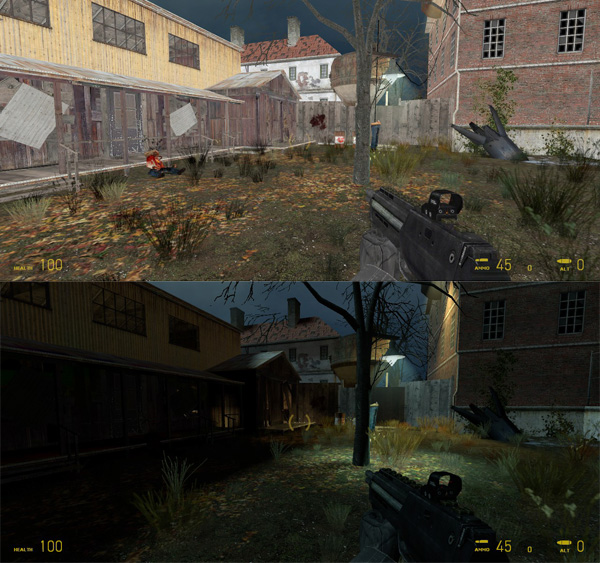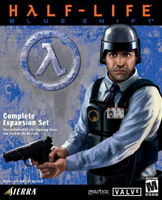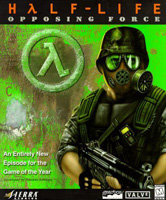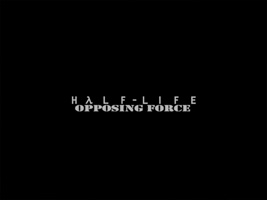
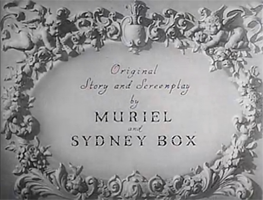
Winner in the category of WRITING (Original Screenplay) at the 19th Academy Awards, presented March 13, 1947 at Shrine Civic Auditorium.
The other nominees were:
The Blue Dahlia – Raymond Chandler
Notorious – Ben Hecht
Road to Utopia – Norman Panama and Melvin Frank
Children of Paradise – Jacques Prévert
Screenplay is not accessible, to my knowledge.
First lines in film:
— Thank you. Some place where we can talk?
— This way.
— She never attempted suicide before?
— No, never.
— I see. What is her occupation?
— She’s a well-known concert pianist; I’ve heard her play several times.
[We are again joined by MRB, who had watched the movie approximately one month earlier. This dicussion is 100% spoilers.]
ADAM I liked the idea of a thriller that’s driven by themes in classical music.
BROOM Would you say “thriller” was the genre?
ADAM Well, yeah, kind of. “Melodrama.”
BROOM It was a funny genre that existed at the time, “psychology equals thriller.”
BETH Like Rebecca.
BROOM I guess, but that plot actually has secrets. Here it was just that her story needed to be told. It was all a secret at the beginning: “Why did she try to kill herself?” “Oh, because of her story.” But then they just told her story. It didn’t have a mystery to it.
ADAM It’s true. I sort of assumed he was going to have some kind of dark relation to her that would be revealed in the end, like, “he’s actually not her second cousin.” But no.
BROOM I was certain that something even earlier in her life was going to be revealed. Because they made a point of having that teenage friend character. The first sequence from her past is that the friend is able to boss her around, and she suffers for it. And then the friend recurs later and we see how agitated she gets at the friend’s presence. It seemed like they were saying that by that age, she already had become someone who for some reason let herself be bossed around… so I thought we were ultimately going to go into her earliest childhood, something with her parents. But no. There was no mystery. I mean, it didn’t make any sense. Once you get to the end, the psychology didn’t make any sense. It seemed like it was going to.
ADAM It didn’t make any sense. But it was pretty engaging, anyway. I actually enjoyed watching the whole thing.
BETH I enjoyed it.
BROOM I enjoyed it too, sure.
BETH It just had different ideas about—
BROOM I was on the edge of my seat wondering whether it was going to turn out to be…
ADAM …to make any sense.
BROOM Whether it was going to turn out to be psychology that we would recognize today as psychology, or not. Because there were sequences where it seemed like it was.
BETH I expected it not to. I really didn’t think that it was going to make sense.
BROOM I mean, they went so far into showing how he ruined her life that I thought, “this can’t turn out to be the Jane Eyre ending where she marries her guardian.” And then when they got there, and the final shot is them as the smallest possible figures they could be on the screen, embracing…
BETH It was pretty bizarre.
MRB I’m really having trouble remembering much about it. Is the last scene where she has to choose between somebody and somebody, and she chooses her psychiatrist?
BROOM No, she chooses James Mason. We rewound it to confirm.
ADAM It would be better if she chose the psychiatrist. That would be a more shocking ending.
MRB Who’s James Mason again? I’m sorry.
BETH The benefactor.
BROOM Yeah, he’s the controlling second cousin, who she lives with.
MRB Oh yeah yeah, and sits in that chair.
BETH And has the cat.
ADAM “Would you like to stroke it?”
BROOM I was thinking, “you could write a whole…”
BETH … thesis on this?
BROOM Yes, a whole master’s thesis on “the sexual politics of 1945 Britain as seen in The Seventh Veil.”
BETH I’m sure someone has. It’s so meaty.
BROOM It’s so contorted! I thought about how whenever you write those theses, or read them — I personally don’t write them or read them! — but those things always observe how what you see in a movie was always a certain kind of code that was in place at the time, and that certain things that couldn’t be said would have been understood through code. I’m not saying that there were specific one-to-one decodings to be made, but I do have the sense that this ending was to meet some kind of subconscious necessity. The character was a very independent woman in a lot of ways: she proposed marriage to that first guy, she speaks all these languages and is the head of her class, she’s a major artist… She has all this self-confidence, at the same time that she’s being pushed around; she shouts in people’s faces… And then at the end, for her to get completely clean inside and then freely choose the guy who’s been pushing her around the whole time, felt like some kind of hedge. “We can’t go all the way and admit that she wants none of them.” I thought the real ending should be that she wants none of these dudes.
ADAM What was the ending to… that other movie about the independent woman who has a controlling husband, who’s Spencer Tracy…
BROOM Yeah, that one too!
ADAM And then she has to make him eggs at the end?
BROOM That’s exactly what I’m saying. The studio added that sequence where she makes a fool of herself, to make the movie more palatable. It too got more sexist at the end.
BETH Woman of the Year.
BROOM I mean, in Woman of the Year, the whole thing was pretty sexist, because it was about how she was too man-like for their relationship to work. But they were working out the same kind of issues, and it ended up in the same place, where you felt them pulling back: “we can’t really follow through with this.” Like, “Trust us, audience! The end of this is not going to be that a woman has her own agenda. Don’t worry!”
BETH Yeah. About this character: you were saying she’s confident and she yells at people — but she’s also timid and sort of antisocial. The American dude developed a crush on her for absolutely no reason.
ADAM Yeah, she was a huge weirdo and so were all the men in her life. Everyone in this movie was a huge weirdo. Including the psychiatrist.
BROOM That’s right. But she was psychoanalyzed throughout the movie, and they addressed it, as “well, she’s shy.”
BETH But that was it! She liked music, and she was shy. And she, weirdly, proposed marriage after going to the movies once.
BROOM And when people would boss her around, she felt like she needed to get in line with their demands to make things go smoothly. And the movie seemed to be saying, “That is her problem, and her feisty independent nature is not her problem.” And it seemed like the psychiatrist was going to lead her to a place where she separated those cleanly. But then it all turned into a puddle, at the end, and none of that worked out.
BETH Do you think this might have had an alternate ending where she comes down the stairs and…
ADAM …sweeps past all of them?
BETH And they had to put them so far away because it’s not actually James Mason, because it was shot later? I don’t actually believe that.
ADAM But I like your fanfic alternative.
BROOM I would be willing to believe it. Anything could have happened when she came down those stairs, and it would have been wrong. When he said, “She’s going to pick the one that she truly loves,” I said, “There’s no way this is going to work out! Of these four guys? No way!”
ADAM No no no, “the one she truly loves” was Peter; that’s why the camera lingered on him first. And then “or the one she was happiest with”…
BROOM Oh, that was an “or”? “The one she was happiest with” was the painter…
BETH Ohhh! You’re right!
ADAM “Or the one she can’t live without; or the one she trusts the most.”
BETH And “trusts the most” is James Mason.
ADAM No, that’s the psychiatrist.
BETH Oh, I see.
BROOM “The one she can’t live without” is James Mason, and that’s who she chooses.
BETH Yes, that’s right.
ADAM I mean, I agree, it’s not a satisfying ending.
BROOM It doesn’t mean anything!
MRB I think my thought at the time was that psychoanalysis was like a new fad. It was very interesting to talk about being psychoanalyzed, in the 40s. I guess the war was over and they could think about other things. Like Spellbound. I don’t know what year that was.
BROOM During the movie we asked about Spellbound too. BETH said she thought it was ’43.
BETH Let me just confirm that.
MRB I can’t think of any others, but I bet someone who’s writing one of these theses could come up with a bunch of movies in the 40s that are about “exploring your real inner personality, because you’re screwed up.”
BETH ’45.
MRB Freud died in what, ’40 or something, right?
BROOM I don’t know. [ed: 1939.] Spellbound was 1945, the same year as this movie, says BETH.
MRB See? It was a big year for psycho- stuff.
BROOM It was hot!
MRB So I think it didn’t even have to hang together. It was just, like, so cool that people were talking about psychology.
BROOM So this is like the psychology equivalent of The Net. Like, “Eh, it doesn’t really need to be about the real internet, it just needs to be branded that way.”
MRB That’s right. “Ooh, she’s talking to a psychiatrist!”
BROOM “You’re going to have to go into the Virtual Reality!”
BETH It seemed like James Mason had fun.
BROOM I enjoyed young James Mason. He must have been like 30, right?
BETH Maybe a little bit older, but yeah. [ed.: 36]
BROOM Well, that’s young for James Mason.
ADAM He seemed coded a little bit like [friend from college].
BROOM Okay, say your thing now about homosexuality.
ADAM MRB, did you think he was coded as a homosexual?
MRB I’m sorry I don’t remember it better. You mean with the cat?
ADAM Yes, the cat, and the limping, and the male servants, and the “women disgust me!”
MRB Yes. As much as I remember, because mostly what I remember is him sitting in the chair at the beginning when she first comes. Yes.
BROOM With a cat on his lap, and then the camera points at it and then tilts up to his face and he says “would you like to stroke it?”
MRB I do remember.
ADAM “Turn around. No, all the way. You, with your straight back, and your sanctimonious disposition…”
BROOM I said earlier: I think this comes from the era where people who liked to fancy themselves sophisticates, serious psychology-thinking types, thought, “You know, the theory is that homosexuals are men who’ve been so turned against women, who behind their seventh veils hate women so much…”
ADAM Right, “and are huge narcissists.” Which he also clearly was.
BROOM To be a homosexual and to be crippled were not just associated through some kind of stereotypical bias; they had consciously thought this stuff through: “He has a limp because he has been scarred by his mother leaving the family, and that’s why he would prefer men. But then ultimately he’s able to realizes that he actually prefers the young woman.” I think it has very little to do with their experience of actual homosexual people in their lives. Also, they being British, it’s all different over there. It’s not like they were in Hollywood hanging around with out gay guys. It was a very British movie, and it had all kinds of weird British ideas. I loved the American character who only sits backward on chairs.
BETH Did you see, when the doctor came to visit him, he stood with one foot up on a chair?
ADAM Yeah, none of it made any sense, as I think about it. But it was very engaging for odd reasons. Even her personality didn’t make any consistent sense throughout the movie. Why did she suddenly get so flirty with the portraitist? And he was so awful!
BETH I thought he was gay too.
BROOM He was German, BETH. That’s a third category.
ADAM “I’m going to rub your neck now. You are very tense… and I love you.”
BROOM Yeah, their weird flirtation scene. Where she plays the music loud.
ADAM “Would you like it if I were up on a dais, in a funny posture, posing for you?” “I would like it very much.” “Well I shan’t.”
BROOM And the painting that he ultimately does is so twisty and awkward. Yes, it was all very strange. But it did have some good runs of dialogue in it. I understand why it was nominated for Best Original Screenplay.
ADAM And won.
BROOM Well, I at least understand why it was nominated.
ADAM It was as entertaining as anything we’ve seen so far. It was more entertaining than…
BETH Most of them.
ADAM I mean, what have we seen so far? The Great McGinty, Woman of the Year, that Swiss Holocaust movie…
BETH Which I liked.
ADAM Citizen Kane…
MRB Wilson!
ADAM And the American Presidentress…
BROOM Princess O’Rourke. It was as good as any of those that aren’t Citizen Kane.
ADAM The Great McGinty wasn’t bad.
BROOM It was also super-weird but had some good bits of dialogue.
BETH I thought Woman of the Year was very entertaining.
BROOM That’s right. I liked the sequence in this with the American, even though it was showy dialogue writing, when he says “You gotta take it easy,” and she says, “I like working,” and he says, “I like ravioli, but I don’t eat it all the time,” and then after they’ve gone through their whole schtick, they meet again in the restaurant, and he orders two raviolis, and she says “I don’t want any,” and he says, “They’re both for me.” I thought that was funny!
ADAM So, like The Great McGinty and like the Swiss one, these are all weirdo movies that don’t fit in genre categories.
BROOM I had that thought: to say “they don’t make ’em like this anymore” doesn’t even begin to touch what they don’t anymore, about this movie. Every idea that is a foundation of this movie is not used in movies anymore. And sometimes I’d be saying to myself, “well, this is a grown-up entertainment, and it’s intelligent and interesting, and even if I think that the sexual politics of it are all wrong, they’re interesting…” but then I would think, “it’s all such dead, dead, dead stuff.” Could you ever bring any of this back? What would be the modern-day equivalent?
BETH She was the only woman in the movie, by the way.
BROOM No: Susie. The horrible friend.
BETH Oh, of course.
ADAM What was that movie where Winona Ryder’s in a mental institution?
BROOM Girl, Interrupted?
ADAM Yeah. How is this any different from that?
BROOM I don’t know, I didn’t see it.
BETH I didn’t see it either.
BROOM I imagine nobody marries their ward at the end.
ADAM No, but I’m sure we could find something that’s “psychologically intense” that’s actually just as wrong and disturbing as this is.
BROOM Shine did borrow the “finish a piano concerto and then go BBBBBRRRBLONK on the keyboard” sequence. This movie did have a fair amount of classical performance in it.
ADAM Which was actually kind of suspenseful. That’s what I was saying about a classical music thriller. When she was playing that piece: was she going to pass out in the middle of it? Her playing of it was psychologically engaging, in a way that was interesting.
BROOM And she did a very good job faking playing. More than most people who have to play a concerto in a movie. So when I first looked this movie up, months ago, when we first started thinking about watching it, I found a lot of older people online saying that, like, it’s so sad that this movie has fallen out of favor because it was such a big deal at the time, especially for the British film industry. And that it was their favorite movie when they were younger, or their parents’ favorite movie. This used to be a beloved, classic, psychological melodrama. I don’t think it can be that to me, but I found it diverting.
ADAM Yeah, I Googled it and I think I found that it was one of the “most-watched British films of all time,” or something.
BETH That’s fascinating.
BROOM I guess the answer is “it just hasn’t aged well,” but it doesn’t feel so much like it’s aged… I mean, the movie itself held up, it’s just that…
ADAM All the concepts…
BROOM Yes, all the concepts have been rolled on their head since then. And it felt a little like they were already rolling around on their heads at the time, and that it wasn’t a very good time to make a movie about this stuff because they didn’t really know what they were talking about. It felt like a time when talking about this stuff was very sophisticated, ambitious, adult, and yet these sophisticated ambitious adults didn’t have a coherent concept of it. It’s like reading old New Yorkers or New York Magazines, which are always putting across that “this is the sophisticated thing right now,” and it only takes a couple years for all those Jules Feiffer people to seem ridiculous.
ADAM As you probably know, I was in a production of “Feiffer’s People” when I was fourth grade, and I didn’t get any of the jokes. They were so weird! I got, like, one joke.
BROOM This had the same “sophisticate of that particular moment” feeling. I can still appreciate that it was sophisticated in style, if not any longer in meaning.
ADAM What was that movie that came out a year or two ago about a girl in London in the 40s, and she goes…
BROOM Paddington?
ADAM “Did you say marmalade?” No, and she’s Jewish, maybe, and it was the debut film of that British girl.
BETH Yeah, you’re talking about that movie where she falls in love with an older man.
BROOM An Education. We saw that.
MRB Carey Mulligan.
ADAM That’s all. It reminded me of that, vaguely.
[We read the New York Times review. Discussion then proceeds at some length, on adjacent topics, but includes no further direct comment on the movie until:]
BROOM I can’t think of more to say, other than that it was confusing and interesting in the ways we’ve mentioned. We didn’t really prompt you, MRB [and spouse], but what was your mood upon finishing this strange movie, a month ago?
MRB Right, we don’t remember very much, but I think what we said afterwards was, “That was stupid.”
BROOM I mean, I’ll grant you that.
ADAM The ending is deflating, certainly.
MRB We didn’t like it and we didn’t have much good to say about it. But like you said at the beginning, it was entertaining enough to watch, because it seemed so out of our time, a thing from another era.
ADAM Can you imagine Don Draper and Betty Draper seeing this movie?
BROOM No.
MRB I think I did think about Betty Draper and her psychology while I watched it.
BROOM That’s true, Mad Men definitely has an element of the old fascination with therapy. But here it was really extreme, like with the big injection that begins the process. Or the total sexualization of therapy at the beginning — not just to compare it to Salome, but for him to say “No one will drop their seventh veil in front of anyone… but a surgeon has to strip you of your clothes before he can operate.” There was something filthy and adult about what was going to happen. They were trying to titillate you just to think about this doctor’s field of expertise. And his weird Peter Lorre quality.
MRB Do you know who Herbert Lom turned into?
BROOM I just know the name. Was he like a Peter Lorre type?
MRB Well, in the Pink Panther movies, he was the annoyed detective that had to deal with Peter Sellers. He was exasperated all the time. But he was sort of a buffoon, instead of the brooding whatever he was here.
BROOM Was the American character a British actor doing an accent? [ed.: Yes.]
ADAM I have no parting thought.
MRB BETH, at the beginning, in the first scene where she jumps out of her bed in the asylum, isn’t she wearing a really complicated nightgown, or whatever she’s wearing? Maybe I’m not remembering, but I feel like there were a million buttons down the back…
BETH I don’t remember that. At some point I remember she was wearing a nightgown where parts of it were satin and parts of it weren’t, and it was wrapped around her back in a weird way.
MRB Maybe that’s it. ‘Cause at the very beginning of the movie it’s not clear where she is, it just looks like a room in a house. Anyway, I just thought her hospital gown was overly coutured. But that’s the 40s. Okay, I’m done, you don’t have to include that part.
BETH Eh, why not.
MRB It’s valid.
BROOM Everything is valid.
Last lines in film:
— Are you trying to tell me she—
— I’m trying to tell you she will want to be with the one she loves, or the one she’s been happiest with, or the one she cannot do without, or the one she trusts…
— And who is that?
— It would hardly be fair of me to say.
I can’t find the radio broadcast of the 19th Academy Awards in a clean file by itself, but all two-and-a-half hours of it can be heard in this podcast (40 MB download), if you skip past the intro. Whereas I have previously recommended the entertainment value of listening to the ceremony, here I will warn that the presentation is rather drab and inflated and tedious. Interesting for period flavor, I suppose, but not a lot of fun. The postwar era has begun!
Writing awards begin at 1:06:12, presentation by Robert Montgomery. Best Original Screenplay is at 1:09:00–1:10:37. For the first time in a while, we have a speech! Though it’s not clear who’s making it. Presumably it’s either producer J. Arthur Rank, or director Compton Bennett. I’m going to guess it’s J. Arthur Rank, since he offhandedly praises his own movie in a way a British director would probably consider inappropriate:
I should explain that I’m not Mr. and Mrs. Sydney Box. [audience laughter] Unfortunately they’re back in England shivering in the cold, while we’re enjoying the California sunshine. However I do thank on their behalf the Academy for giving us this great honor, for our great little picture. I think Ann ought to be up here really as well; she’s down in the audience. [chuckles]
Perhaps more interesting, for our purposes, is the Academy’s explanation of the distinctions between their three confusing writing categories. Here is what Robert Montgomery says:
First, the best Original Motion Picture Story: this award covers only originals written for the screen, not previously published or produced in any other medium.
…
Next, the award for the best Original Screenplay: the writer or writers of the screenplay must also have been the sole author or authors of the original.
…
The next award is for the best written Screenplay, whether developed from published material or an original by some other writer or writers.
Got that?
Well, at least they tried.

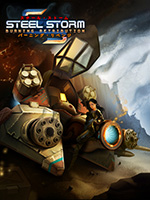

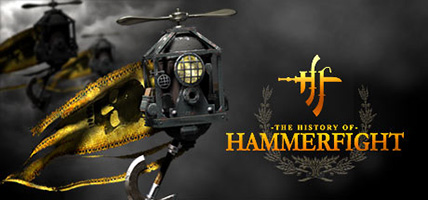
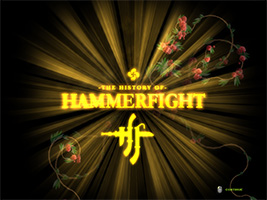
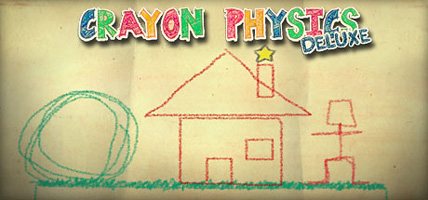

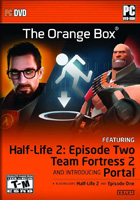
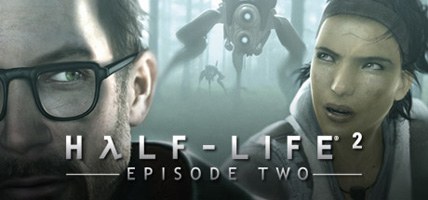
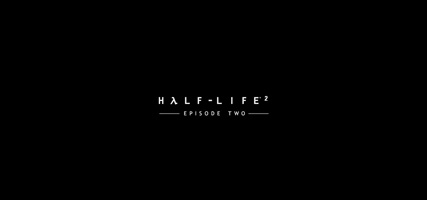
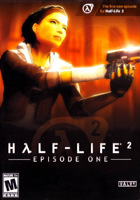
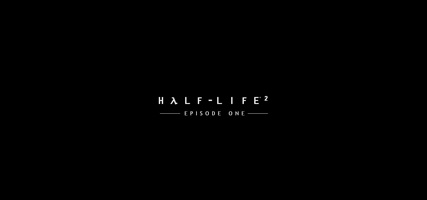
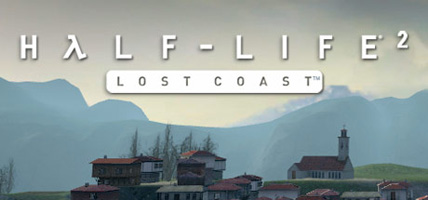
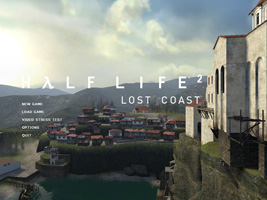
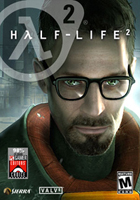
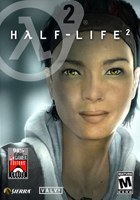
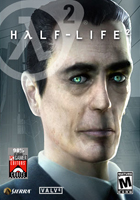 (Collect all 3 covers!)
(Collect all 3 covers!)